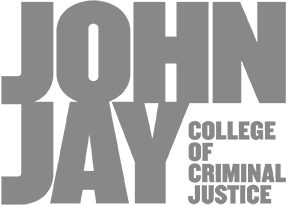Link: http://current.nyfa.org/post/171666497163/conversations-monika-fabijanskas-the-un-heroic
March 8, 2018
Interviewed by Priscilla Son
NYFA Fiscal Sponsorship gives a sneak peek at Fabijanska’s upcoming exhibition in honor of Women’s History Month.
In recognition of Women’s History Month, NYFA Fiscal Sponsorship is sharing an interview with art historian Monika Fabijanska on her newest curatorial endeavor, The Un-Heroic Act: Representations of Rape in Contemporary Women’s Art in the U.S.
The exhibition, opening this fall at Shiva Gallery at John Jay College of Criminal Justice, CUNY, features a diverse roster of artists representing three generations including Andrea Bowers, Jenny Holzer, Suzanne Lacy, Ana Mendieta, Senga Nengudi, Yoko Ono, and Kara Walker. It aims to fill a gap in art history where the subject of rape is represented by countless historical depictions by male artists, called ‘heroic acts’ by author Susan Brownmiller. It is a thoughtful and researched assemblage demonstrating the diversity, ubiquity, and centrality of rape imagery in women’s art.
Read through our interview with Fabijanska for her insights into the upcoming exhibition, and be sure to stay tuned to NYFA Current for details on the exhibition.
NYFA: Surveying the history of Western art, there is a prevalence of Greco-Roman mythological narratives (e.g. Bernini’s Rape of Proserpina or Ruben’s Rape of Europa) that depict rape. How do the women artists in your exhibition, The Un-Heroic Act, engage with the concept of rape differently?
Monika Fabijanska: The way men portray rape of women is a function of their cultural (mis)perception of what it really is. Even when they render rape as despicable, men focus on the action. Susan Brownmiller describes this treatment of rape in mythology and classical literature, which continues throughout contemporary films and video games, as ‘heroic’ rape. What makes works on rape by women artists different from those of men is their focus not on the action or drama, but on the lasting psychological devastation of the victim: her suffering, silence, and shame.
NYFA: Does The Un-Heroic Act seek to re-evaluate the history of art or strive to connect with the current cultural dialogue surrounding gender, harassment, and equity?
MF: This is not an exhibition about rape but about rape iconography. It will help fill a gap in the history of art, while, at the same time, call on our society to respect and pay attention to the female perspective. The exhibition will allow one to reflect on the nature of sexual abuse through contemplation, empathy, and shock created by the works. Art, by mobilizing empathy, provides a psychological foundation for imagining the situation of the other; it can help us un-shame the victims, overcome its sensational aspects created by the media, and promote proper reactions to sexual abuse.
NYFA: What mediums, styles, and strategies do these women artists employ to document, imagine, or comment on rape?
MF: The exhibition analyzes rich iconography of rape in all mediums from paintings, to installations, new media, and social practice. It examines remarkably varied visual languages that the artists employed, from figuration to abstraction and text, in order to evoke a range of feelings from empathy to shock, and to cover a variety of themes: fairy tales and art history, rape as a war crime, rape in the military, rape and slavery, rape epidemics on American Indian reservations, and college rape culture, among others.
NYFA: Are there different visual languages that the three generations of women use to depict rape? Do these languages correspond with any cultural or art historical trends?
MF: The viewer will note how subsequent generations of women artists’ voices differ yet never go silent. Channeling the voice of our youngest generation which speaks about rape, female sexuality and psyche, unapologetically, Naima Ramos-Chapman breaks all taboos as she presents the everyday routine of a woman fighting PTSD after a sexual assault.
The exhibition presents works by a diverse roster of artists, reflecting on specific cultural experiences. Rape is an abuse of power, so it has been used as a weapon in war (e.g. the Holocaust or the war in Bosnia), or to denigrate people of color. Some works analyze cultural texts: Natalie Frank interprets unsanitized Brothers Grimm fairy tales, while Roya Amigh reads classical Persian poets like Rumi in order to reflect on contemporary events.
NYFA: Why did you choose NYFA Fiscal Sponsorship?
MF: For an independent curator, collaboration with NYFA is priceless: there’s prestige, diversification of donation channels (not all foundations can make grants to universities), an easy way for sponsors to donate online, and the ability to manage your account and expenses easily and quickly. Last but not least, it’s an opportunity to work with NYFA staff who are patient, will guide you through their system, share with you their knowledge, give you advice, and console you when needed. They’ve seen it before and they are with you when you need them. In other words, people at NYFA rock!
